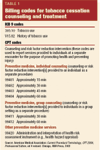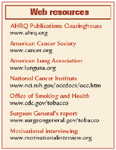The A-R-T of tobacco use counseling: A new office approach
Another article about tobacco use counseling? Before you roll your eyes and move on, take a look at this practical strategy, which includes a new twist that can work for counseling about any risky behavior.
Every pediatrician is well aware of the importance of preventing or stopping tobacco use among patients and parents,1 yet the perceived obstacles to providing such counseling are daunting-so much so that most pediatric care practitioners spend very little time on it. Each clinician quickly finds that there is no ideal intervention-that perfect one- or two-line statement or question that fits easily into a busy office visit and is effective and appreciated by patients and parents-and discouragement therefore runs rampant. To counter that trend, we offer a practical approach to counseling that provides the clinician with feedback that the process is working, and, ultimately, encourages continued prevention efforts. Our approach also nurtures the developing relationship between parent and child, which can form the basis for a tobacco-free life for that child.
Obstacles to counseling


Five As, five Rs-and five Ts
The most recent evidence-based approach to creating a comprehensive plan for counseling about tobacco use is summarized in the 2000 report Tobacco Use Cessation, developed by the United States Agency for Healthcare Research and Quality (AHRQ) for the Centers for Disease Control and Prevention (CDC).4 The AHRQ report features two useful mnemonics: